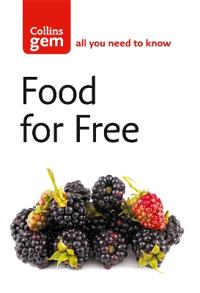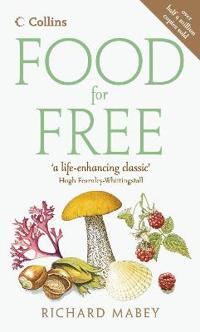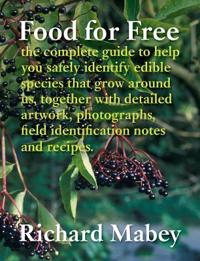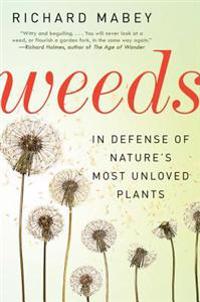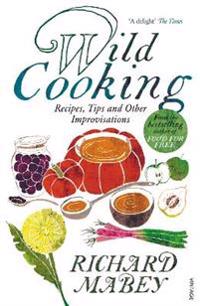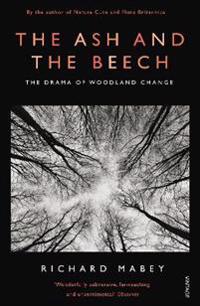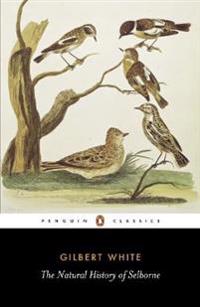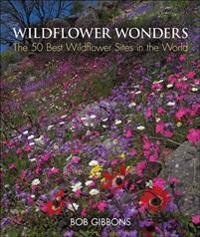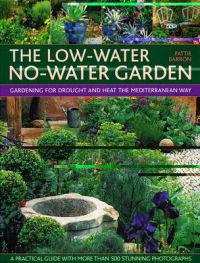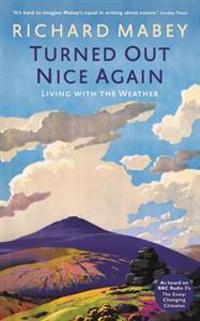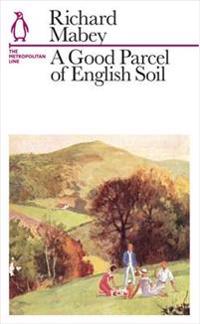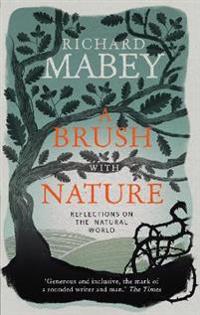Landscape with Figures (Pocket)
avRichard Jefferies, Richard (INT) Mabey, Richard Jefferies
ISBN: 9780141392899 - UTGIVEN: 2014-01Richard Jefferies was the most imaginative and least conventional of nineteenth-century observers of the natural world. Trekking across the English countryside, he recorded his responses to everything from the texture of an owl's feather and 'noises in the air' to the grinding hardship of rural labo[...]
Flora Britannica (Inbunden)
avMabey, Richard
ISBN: 9781856193771 - UTGIVEN: 1996-10-07Covering the native and naturalized wild plants of England, Scotland and Wales, this reference guide to plants and flowers contains over 500 colour images.[...]
Food for Free (Häftad)
avRichard Mabey
ISBN: 9780007183036 - UTGIVEN: 200408The ideal portable companion, the world-renowned Collins Gem series returns with a fresh new look and updated material. This is the perfect pocket guide for aspiring foragers. Over 100 edible plants are listed, fully illustrated and described, together with recipes and other fascinating details on t[...]
Food for Free (Häftad)
avRichard Mabey
ISBN: 9780007247684 - UTGIVEN: 2007-04A complete guide to help you safely identify edible species that grow around us, together with detailed artworks, field identification notes and recipes.[...]
Food for Free (Inbunden)
avRichard Mabey
ISBN: 9780007438471 - UTGIVEN: 201204The classic foraging guide to over 200 types of food that can be gathered and picked in the wild, Food for Free returns in its 40th year as a sumptuous, beautifully illustrated and fully updated anniversary edition. Originally published in 1972, Richard Mabey,s classic foraging guide has never been [...]
Weeds: In Defense of Nature's Most Unloved Plants (Häftad)
avRichard Mabey
ISBN: 9780062065469 - UTGIVEN: 201206Weeds are botanical thugs, but they have always been essential to our lives. They were the first crops and medicines and they inspired Velcro. They adorn weddings and foliate the most derelict urban sites. With the verve and historical breadth of Michael Pollan, acclaimed nature writer Richard Mabey[...]
The Wild Cooking (Storpocket)
avRichard Mabey
ISBN: 9780099522966 - UTGIVEN: 200909Richard Mabey's sparky, offbeat book is about canny and inventive making-do, or 'busking in the kitchen'. Whether creating a cassoulet which uses English ingredients, making bread from chestnuts or slow-cooking a Peking duck in front of an ancient fan heater, he encourages us to be daring and imagin[...]
Ash and the Beech (Häftad)
avRichard Mabey
ISBN: 9780099587231 - UTGIVEN: 2013-06From ash die-back to the Great Storm of 1987, our much-loved woodlands seem to be under constant threat from a procession of natural challenges. The author reveals how we have appropriated and humanised trees, turning them into arboreal pets. She argues that respecting trees' independence may be the[...]
The Natural History of Selborne (Pocket)
avGilbert White, Richard (EDT) Mabey, Gilbert White
ISBN: 9780140431124 - UTGIVEN: 1977-06More than any other writer, Gilbert White (1720-93) has shaped the relationship between man and nature. A hundred years before Darwin, White realised the crucial role of worms in the formation of soil and understood the significance of territory and song in birds. His precise, scrupulously honest an[...]
Wildflower Wonders: The 50 Best Wildflower Sites in the World (Inbunden)
avBob Gibbons, Richard Mabey
ISBN: 9780691152295 - UTGIVEN: 2011-10"Wildflower Wonders" showcases the most spectacular displays of wild blooms on the planet, from infrequent flowerings in the Mojave and other deserts to regular but no less stunning alpine wildflower "events" in Italy, South Africa, and Australia. This magnificently illustrated volume features 200 p[...]
The Low-Water No-Water Garden (Pocket)
avPattie Barron, Richard Mabey, Simon McBride
ISBN: 9780754818380 - UTGIVEN: 200811The Low-Water No-Water Garden: Gardening for Drought and Heat the Mediterranean Way. How to create a low-maintenance Mediterranean-style garden, wherever you live. A practical guide with 500 stunning colour photographs[...]
Turned Out Nice Again (Inbunden)
avRichard Mabey
ISBN: 9781781250525 - UTGIVEN: 2013-02An exploration of our preoccupation with the weather, as heard on BBC Radio 3: Changing Climates. In his trademark style, the author weaves together science, art and memoirs to show the weather's impact on our culture and national psyche. He rambles through the myths of Golden Summers and our persis[...]
A Good Parcel of English Soil (Häftad)
avRichard Mabey
ISBN: 9781846146169 - UTGIVEN: 201303Richard Mabey, one of Britain's leading nature writers, looks in A Good Parcel of English Soil at the relationship between city and country, and how this brings out the power of nature - part of a series of twelve books tied to the twelve lines of the London Underground, as Tfl celebrates 150 years [...]
Weeds (Storpocket)
avRichard Mabey
ISBN: 9781846680816 - UTGIVEN: 2012-03Ever since the first human settlements 10,000 years ago, weeds have dogged our footsteps. They are there as the punishment of 'thorns and thistles' in Genesis and , two millennia later, as a symbol of Flanders Field. They are civilisations' familiars, invading farmland and building-sites, war-zones [...]
Brush With Nature (Häftad)
avRichard Mabey
ISBN: 9781849908252 - UTGIVEN: 2014-07Described as 'Britain's greatest living nature writer', the author has revealed his passion for the natural world in eloquent stories for BBC Wildlife Magazine. This title features his favourite pieces and presents a view of the changing natural landscape in which we live.[...]



